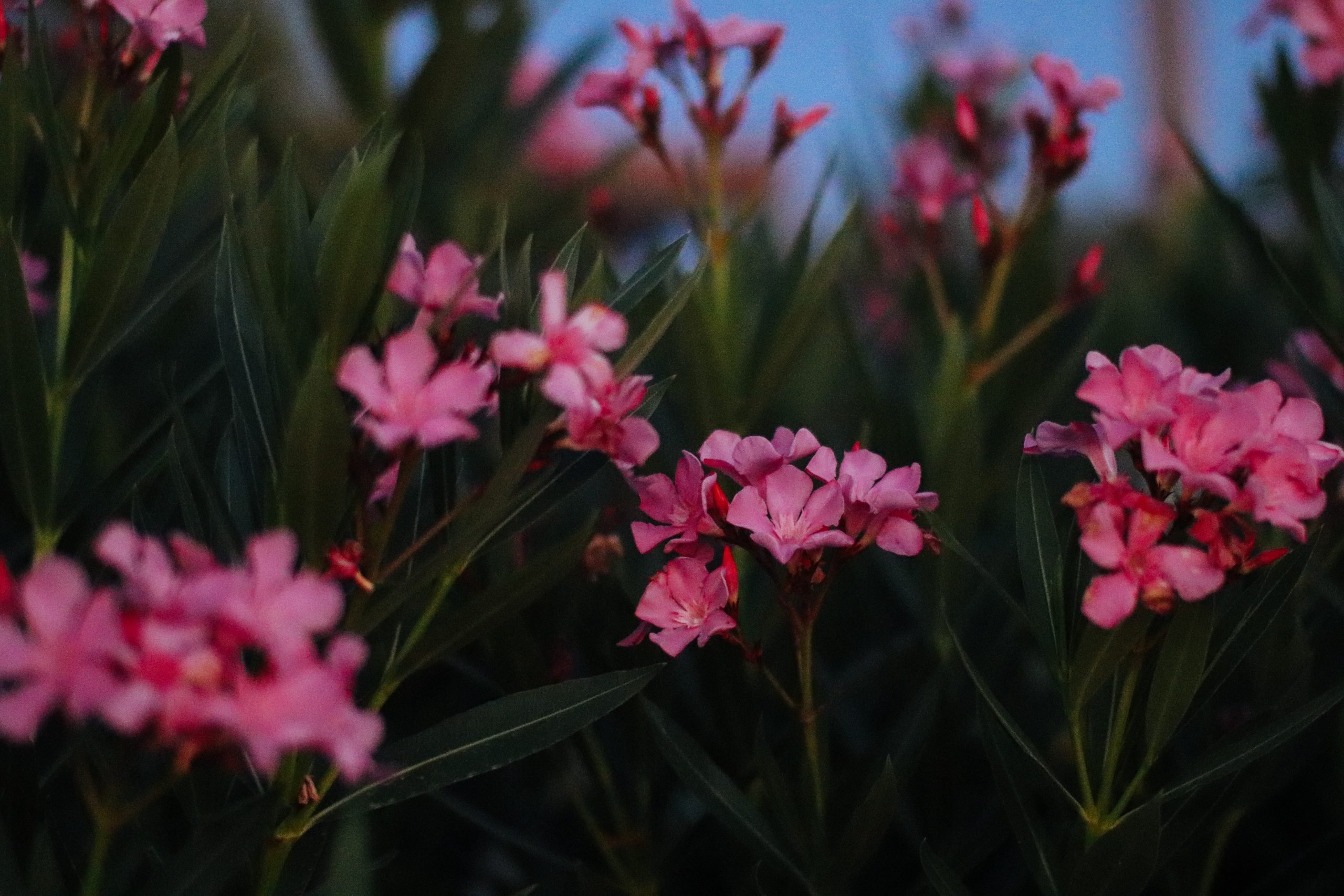How to Plant and Take Care of an Olive Tree
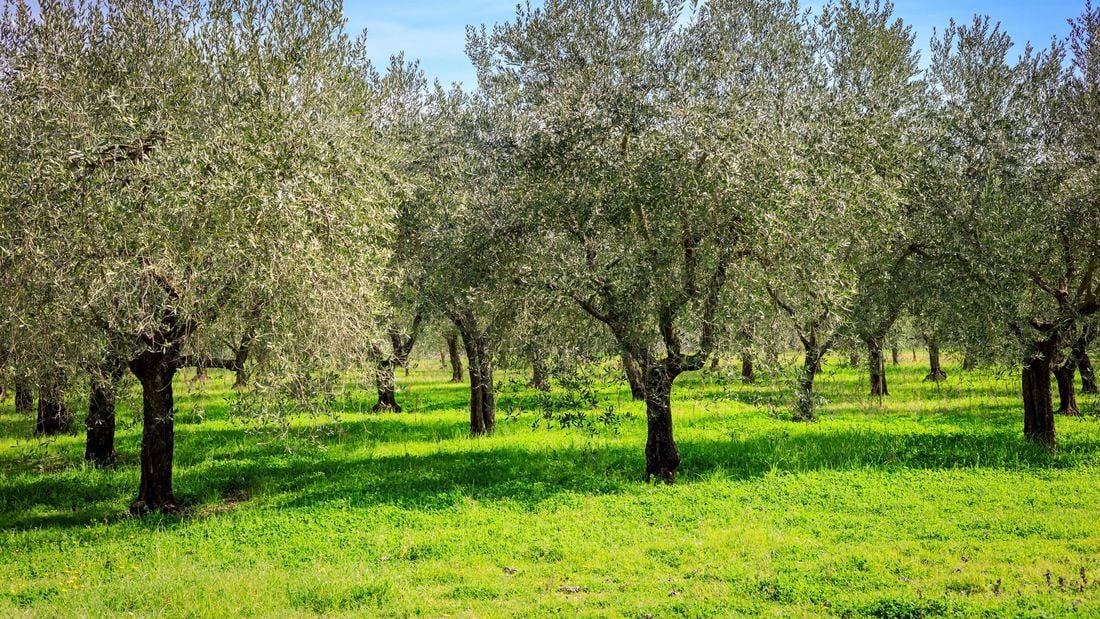
Table of Contents
Olive trees have been cultivated for thousands of years for their delicious and nutritious fruits, oil, and wood. They are not only beautiful ornamental trees but also have a wide range of health benefits. Growing an olive tree in your backyard can provide you with fresh air, high-quality olive and tasty olives for eating as well as pickling.
Before you begin, it is important to have some basic knowledge about the olive tree. Its scientific name is Olea europaea, and it is an evergreen tree that can grow up to 30 to 35 feet tall. It is native to the Mediterranean region but is now grown worldwide in suitable climates.
In this article, we will guide you through the process of planting and growing an olive tree, including selecting the right variety, preparing the planting site, planting the tree, and maintaining it.
We will also cover how to harvest and use the olives. So, let’s get started!
Choosing the Right Olive Tree
Olive trees are a popular choice for gardeners and homeowners looking to add an element of Mediterranean charm to their outdoor spaces. There are many reasons to grow olive trees – they are attractive and produce healthy and delicious olives, making them a functional addition to any landscape. However, choosing the right olive tree can be a challenging task, especially if you are not familiar with the different varieties and their unique characteristics.
Here, we will discuss the factors to consider when selecting an olive tree, the different varieties available, and where to purchase them.
1. Factors to Consider when Selecting an Olive Tree
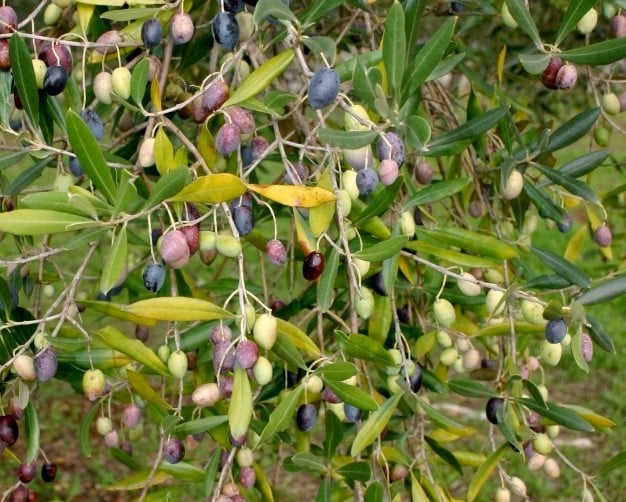
We will discuss four main factors that need to be considered while selecting an olive tree. These four factors are climate, soil, size, and pollination.
- Climate: Olive trees are native to the Mediterranean region; hence they thrive in hot and dry climates. Therefore, it is essential to consider your local climate when selecting an olive tree. In general, they prefer mild winters and long, hot summers.
- Soil: Olive tree requires well-draining soil that is rich in nutrients. The pH level of soil ideal for olive trees ranges from 6.5 to 8.5. It is best to have your soil tested before planting an olive tree.
- Size: Olive trees can grow quite large, with some varieties reaching up to 40 feet tall. Moreover, it is important to consider the size of your outdoor space when selecting an olive tree. If you have a small garden, look for dwarf or compact varieties that are more manageable in size.
- Pollination: Olive trees are not self-fertile, which means that they require cross-pollination from another olive tree to produce fruit. So, it is important to plant at least two different varieties of olive trees to ensure successful pollination.
2. Different Olive Tree Varieties and Their Characteristics
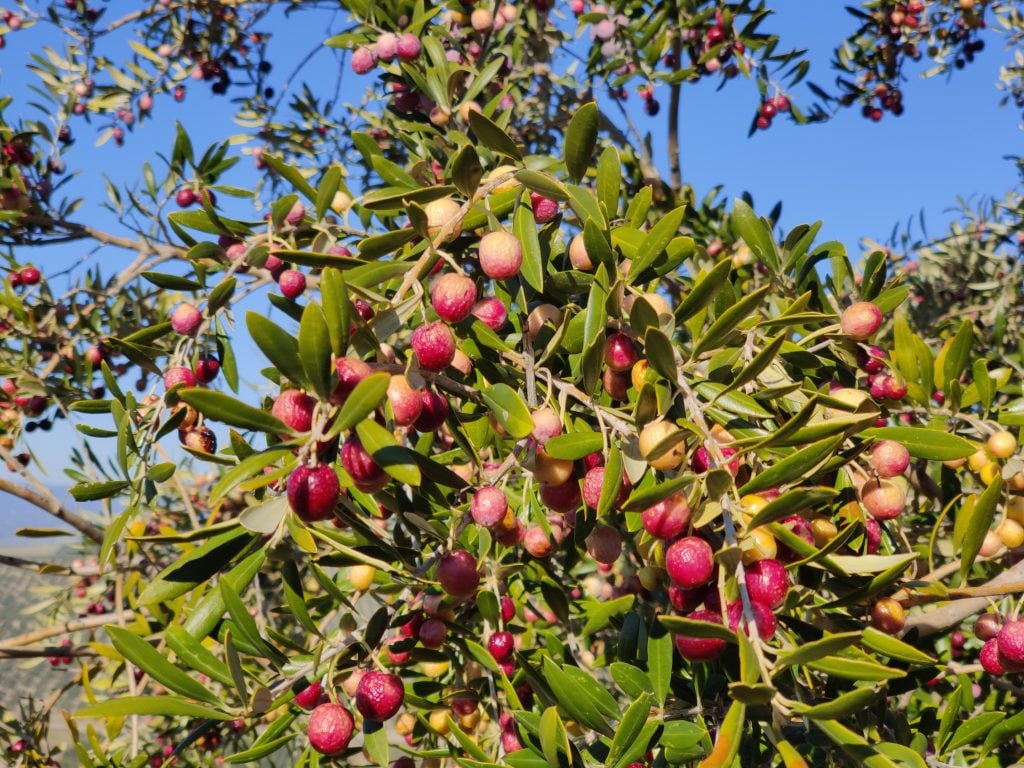
Four popular varieties of olive trees are popular are listed below.
- Arbequina: This variety, native to Spain, is a popular choice for small gardens and grows to a maximum height of 30 feet. It produces small, flavourful olives that are ideal for making oil. It can also endure cold climates.
- Frantoio: This Italian variety is known for its large, flavourful olives that are ideal for making oil. It is a relatively large tree that can grow up to 25 feet tall.
- Picholine: This is the French cultivar of olive trees. The green olives of this variety are used for eating, whereas the black ripened ones are used for making oil. It can grow up to 30 feet in maximum height.
- Kalamata: This variety is native to Greece and produces almond-shaped olives. These flavourful olives are preserved in olive oil or red wine, or even red wine vinegar.
3. Where to Purchase Olive Trees?
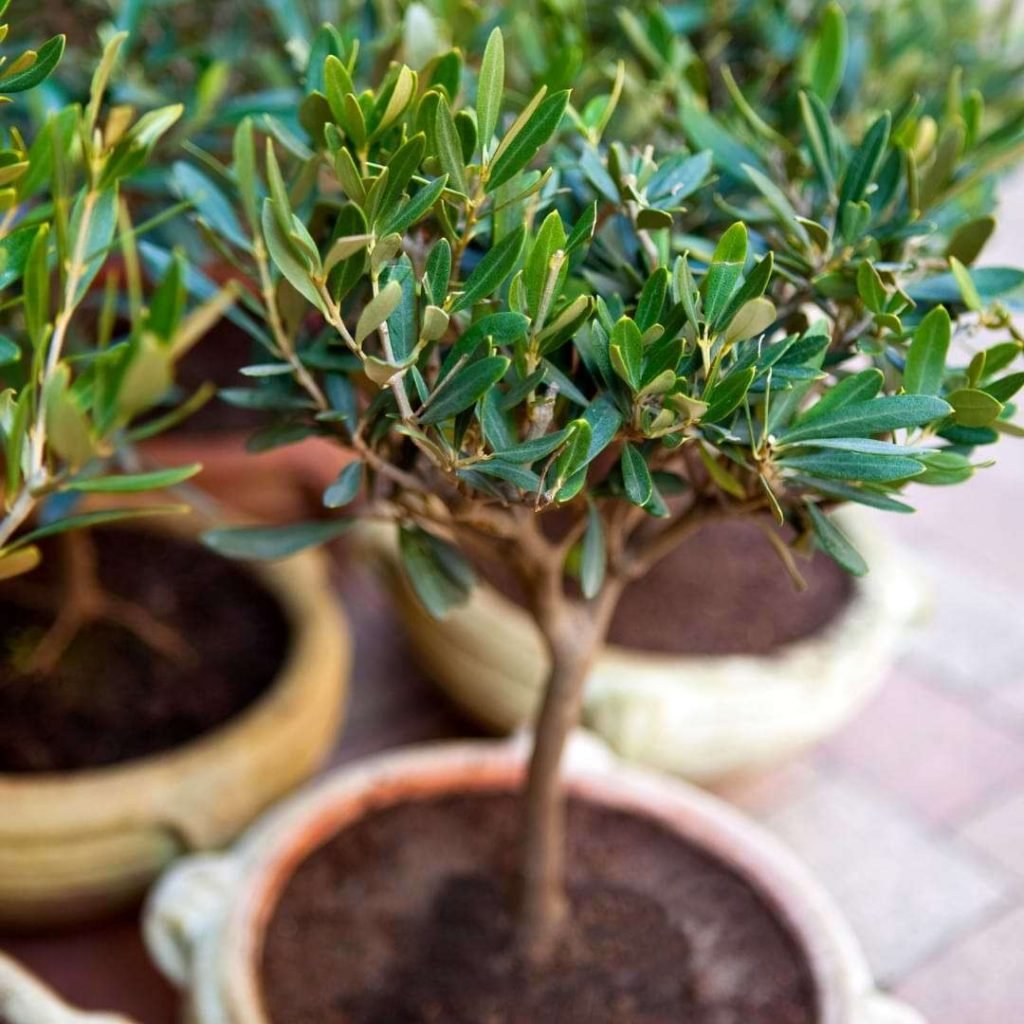
The three best places to buy your olive tree are nurseries, online retailers, and local growers. Most nurseries and garden centres stock a variety of olive trees, making them an excellent place to start your search. You can also consider buying online, as online retailers specialise in olive trees and offer a wide range of varieties for purchase. If you are fortunate enough to live in an area with a thriving olive industry, you may be able to purchase olive trees directly from local growers.
Preparing the Planting Site for Growing an Olive Tree

Olive trees are a beautiful addition to any garden or outdoor space. They produce delicious olives with health benefits and are even low-maintenance trees. However, growing olive trees require careful preparation of the planting site to ensure that the trees thrive and produce abundant fruit.
Here, we will discuss the steps to take when preparing the planting site for an olive tree.
1. Selecting the Planting Location
When selecting a location to plant an Olive tree, consider temperature, light, and spacing, Olive trees are grown in warm, dry climates with mild winters and hot summers. They can tolerate some frost; however, prolonged exposure to freezing temperatures can damage or kill the tree. They require full sunlight to thrive and produce abundant fruit. Therefore, it is essential to choose a location that receives at least 6 to 7 hours of sunlight every day. Olive trees can grow quite large, with some varieties reaching up to 35 feet tall.
2. Soil Preparation
Before planting an olive tree, it is essential to test the soil to determine its pH level and nutrient content. This will help you determine whether any changes are necessary to improve soil quality. To adjust the soil pH level, you can add lime or sulfur to it. Olive trees require well-drained clay and loamy soil to thrive. If the soil is compacted or poorly drained, you may need to amend it by adding sand, gravel, or silt to improve drainage.
How to Plant an Olive Tree
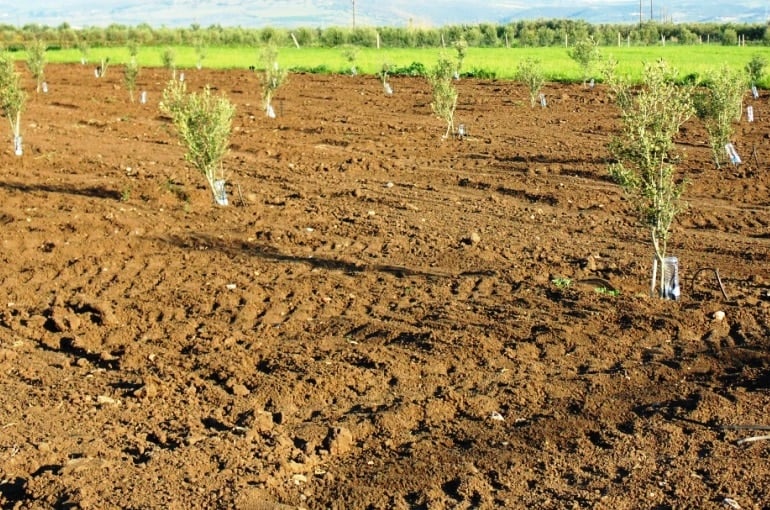
Planting an olive tree can be a wonderful and rewarding experience. It is necessary to ensure that the tree is planted correctly so that its growth and productivity are maintained. Here are some important tips to consider when planting an olive tree.
1. Choosing the Right Time to Plant
The best time to plant an olive tree is in the autumn or early spring when the weather is mild and less risky of extreme temperatures. Planting during summer or winter months can stress the tree and affect its growth. You must also keep a check on the weather forecast and avoid planting during periods of extreme heat or cold.
2. Planting Instructions
When planting an olive tree, follow the instructions that are listed below.
- Dig a hole that is twice as wide as the tree’s root ball and just as deep.
- Mix organic matter such as compost, manure, or leaf mold with the soil to improve fertility and drainage.
- Now, carefully position the tree at the centre of the hole.
- Backfill the hole with soil, tamping it down gently to remove any air pockets.
- Water the tree deeply around the roots.
- Add a layer of mulch around the base of the tree to help retain moisture and prevent weed growth.
- Now regular care for the tree includes watering, fertilising, pruning, and pest and disease control.
3. Watering, Mulching, and Fertilising Olive Tree
Olive trees should be watered deeply once or twice a week, depending on the weather and soil conditions. The soil should be kept moist but not waterlogged. Along with watering, mulching around the base of the tree can help retain moisture in the soil and prevent weed growth. It also helps to regulate soil temperature, which is beneficial for the olive tree. An olive tree requires regular fertilisation to maintain healthy growth and fruit production. Nitrogen is an essential element for a growing olive tree. Lack of nitrogen can cause shortened annual vegetation. So, use a balanced fertiliser that contains nitrogen, phosphorus, and potassium or a specialised fertiliserdesigned for olive trees.
- CAN BE USED ON TREES BOTH YOUNG TO OLD, POTTED OR PLANTED OUT: This Vitax Olive Tree Feed is...
- PROVIDES EXTENDED NITROGEN RELEASE: Delivers a slow and steady supply of nitrogen, ensuring...
- BOOSTS FRUITING: Enhances the tree's ability to produce more fruit, leading to larger, more abundant...
How to Maintain the Olive Tree
Maintaining the olive tree after planting is crucial for its health and productivity. Regular pruning helps to remove dead and diseased wood, promote new growth, and control the size and shape of the tree. Olive tree requires regular fertilisation to provide the necessary nutrients for growth and fruit production. Proper watering is also essential, especially during the tree’s first few years of growth.
Olive trees are susceptible to pests and diseases, especially olive fruit flies, so regular inspection and treatment are necessary to keep them healthy. Regular harvesting of the olives also helps to maintain the productivity of the tree and encourages new growth. With proper care and attention, your olive tree will provide you with delicious olives for many years.
Growing an Olive Tree – A Fulfilling Experience!
In conclusion, growing an olive tree can be a fulfilling experience. Not only does it provide you with fresh, high-quality olives and oil, but it also adds beauty and interest to your garden. With proper care, an olive tree can live for hundreds of years, making it a long-lasting investment in your landscape.
So, if you’re thinking about growing an olive tree, don’t hesitate! Take the first step by researching the right variety for your climate and soil type, and start preparing your planting site.
With patience and care, you can enjoy the benefits of fresh olives, as well as the beauty and resilience of this ancient tree.
Frequently Asked Questions (FAQs)
Where Do Olive Trees Grow Best?
Olive trees grow best in regions with a Mediterranean climate, characterised by hot, dry summers and mild winters. Countries such as Spain, Italy, France, and Greece are major producers of olives. Olive trees require well-drained soil and plenty of sunlight to thrive.
What is the Best Fertiliser for Olive Trees?
The best fertiliser for olive trees is a balanced fertiliser having nitrogen, phosphorus, and potassium. Remember, the nitrogen content should not be lacking because it can cause shortened annual vegetation. Also, you must avoid over-fertilisation as it can cause excessive vegetation growth and reduced fruit production.
What Kind of Soil Do Olive Trees Like?
Olive trees prefer well-draining soil that is deep and fertile. They can tolerate a range of soil, including sandy, loamy, and clay soils, as long as they are well-draining. Soil pH should be between 6.5 to 8.5. It is also important to avoid soil compaction, as this can limit root growth and water absorption.


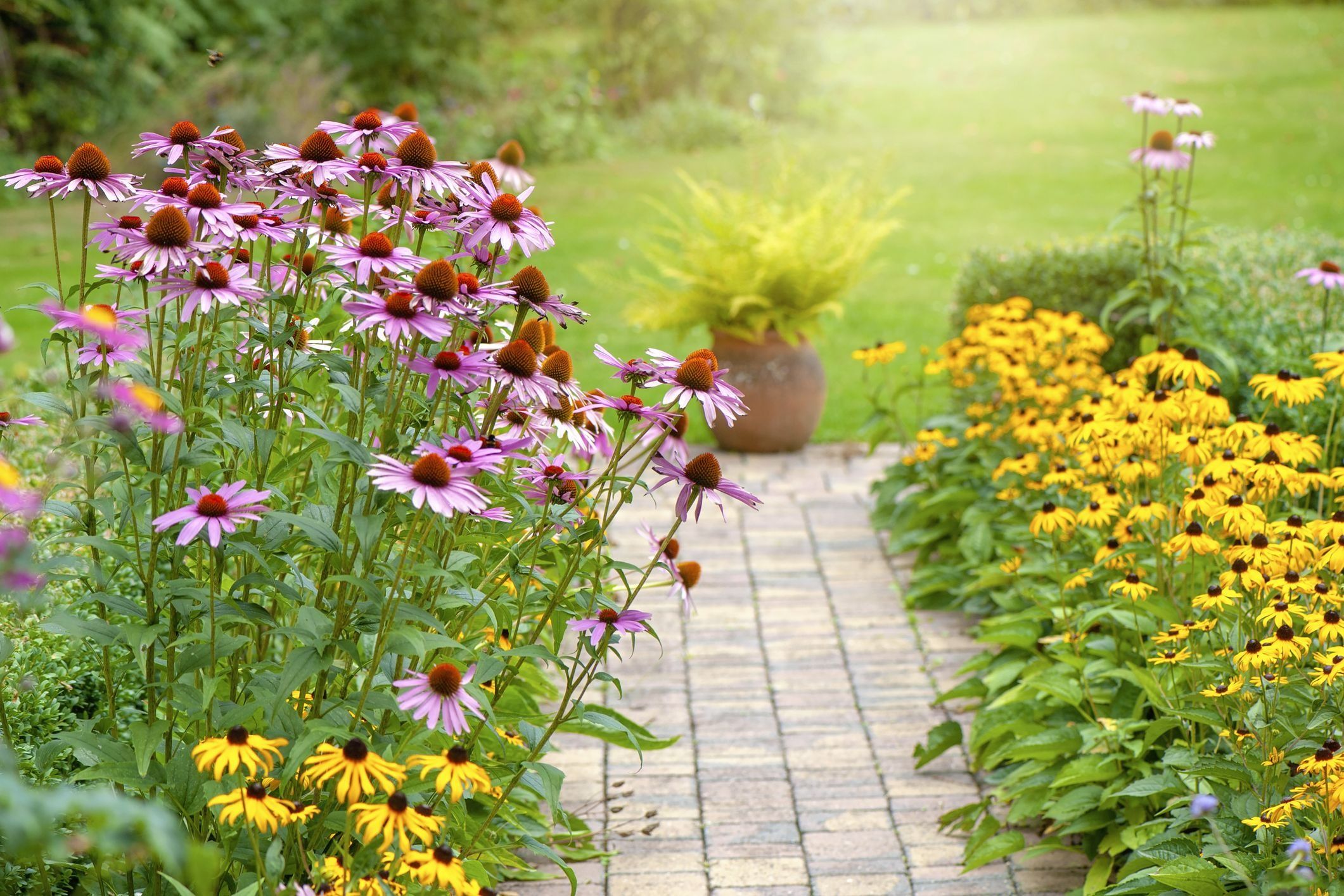

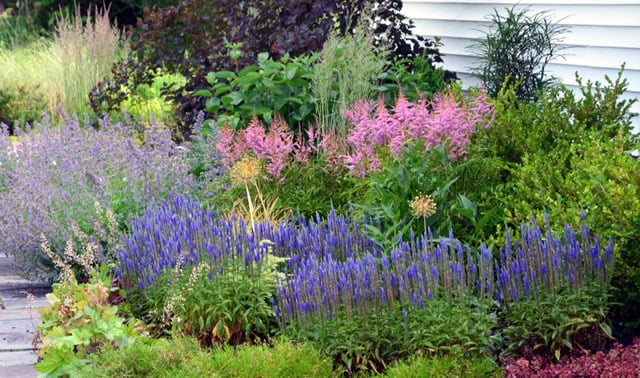
![How to Grow and Care Bougainvillea Plant [UK]](https://staging.thearches.co.uk/wp-content/uploads/Bougainvillea-Plant-Care-Growing-Tips-1.jpg)

